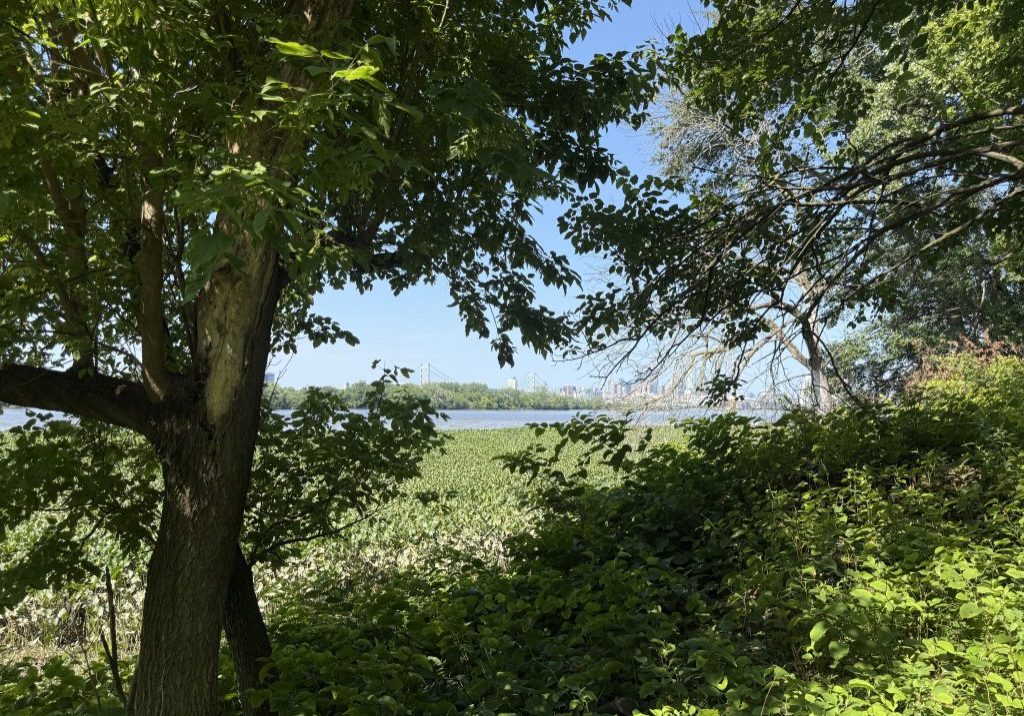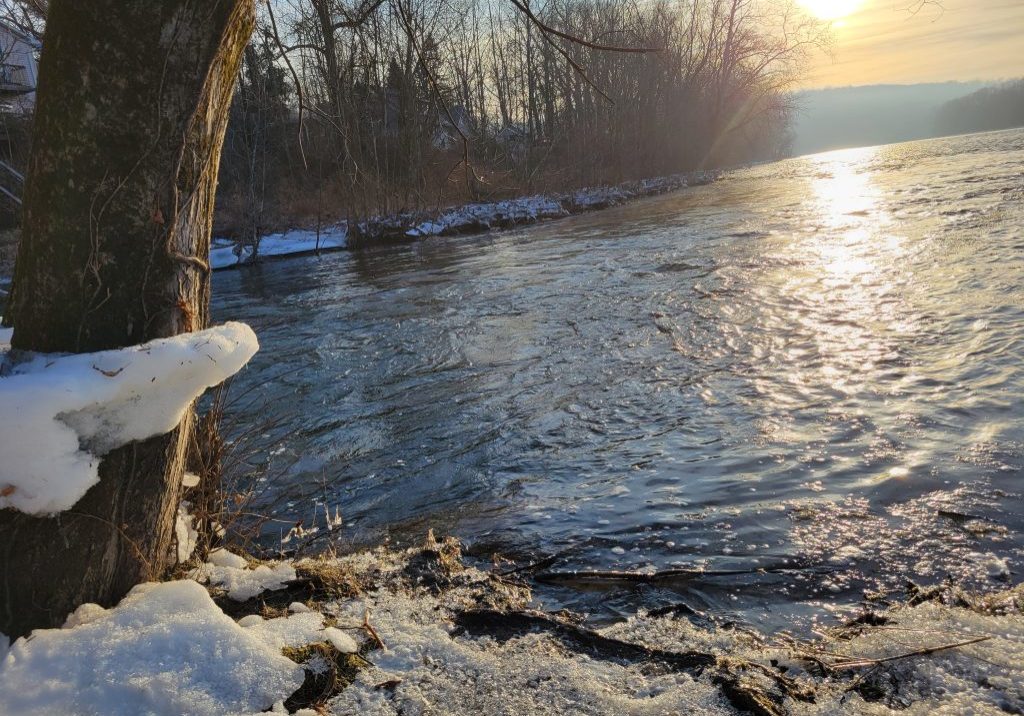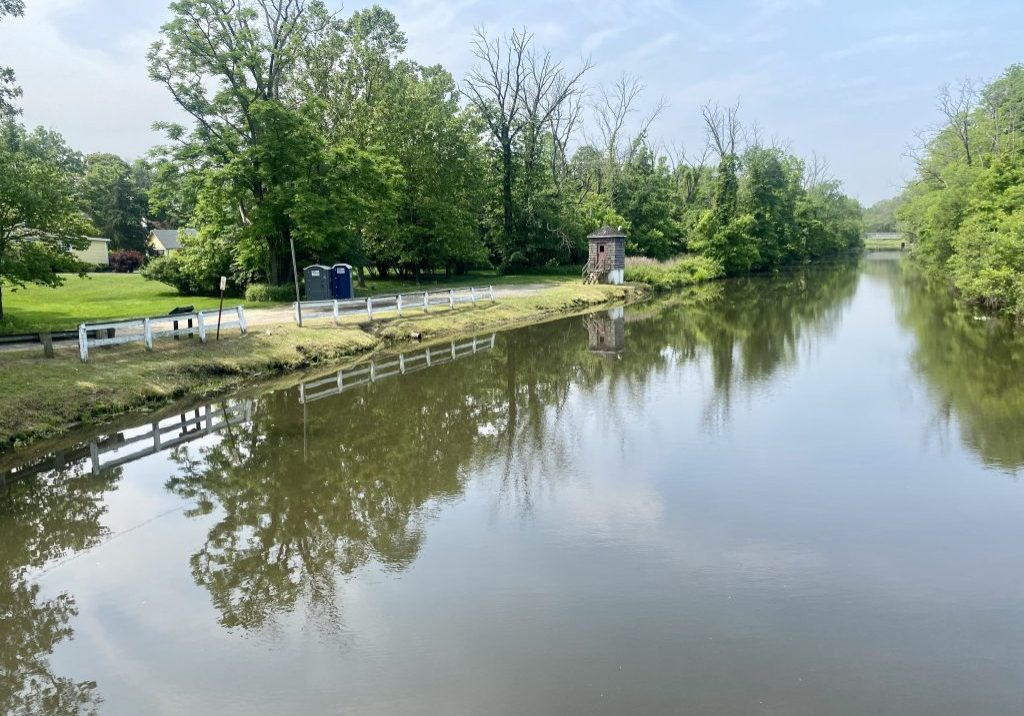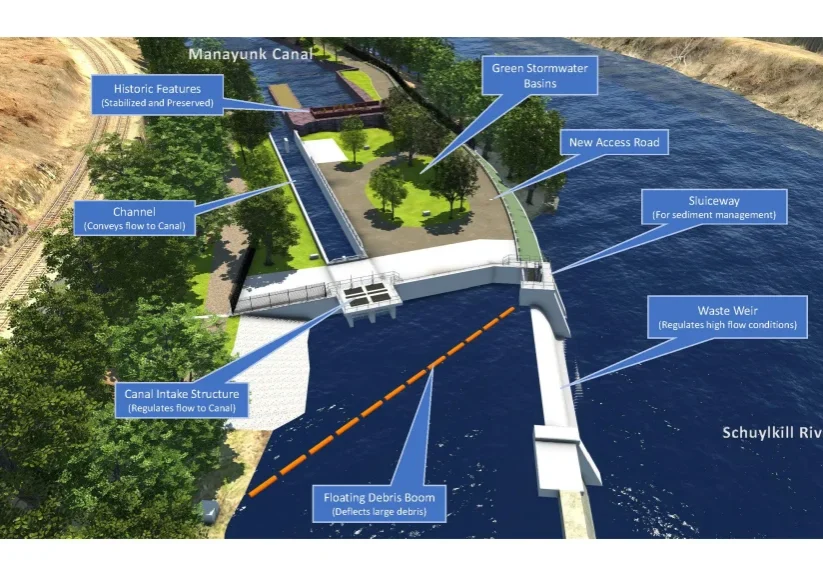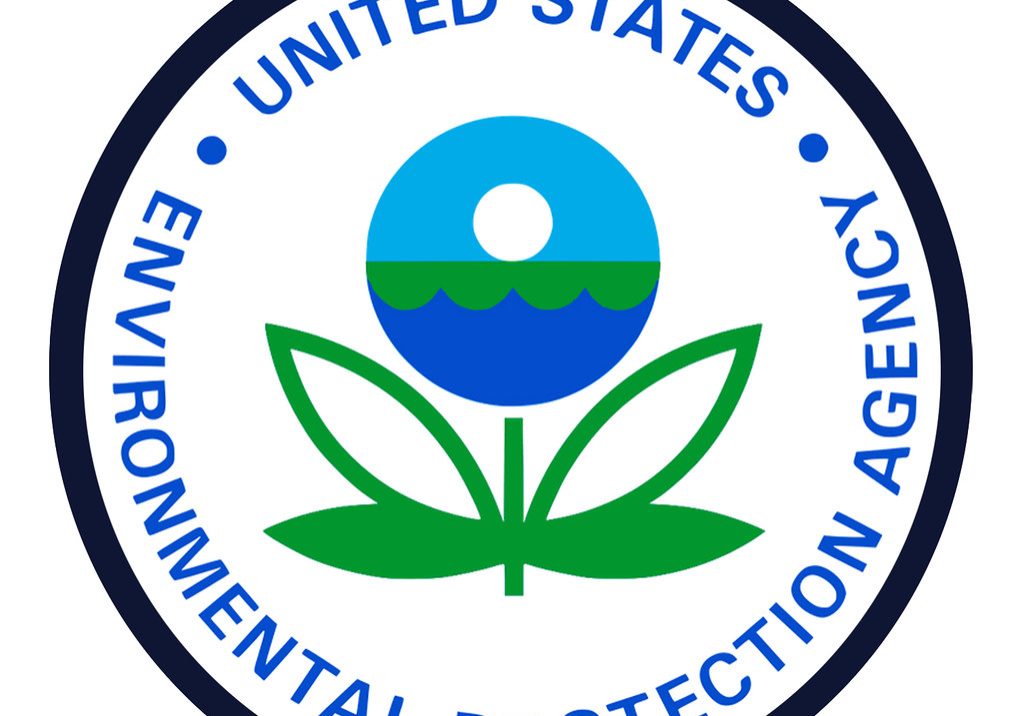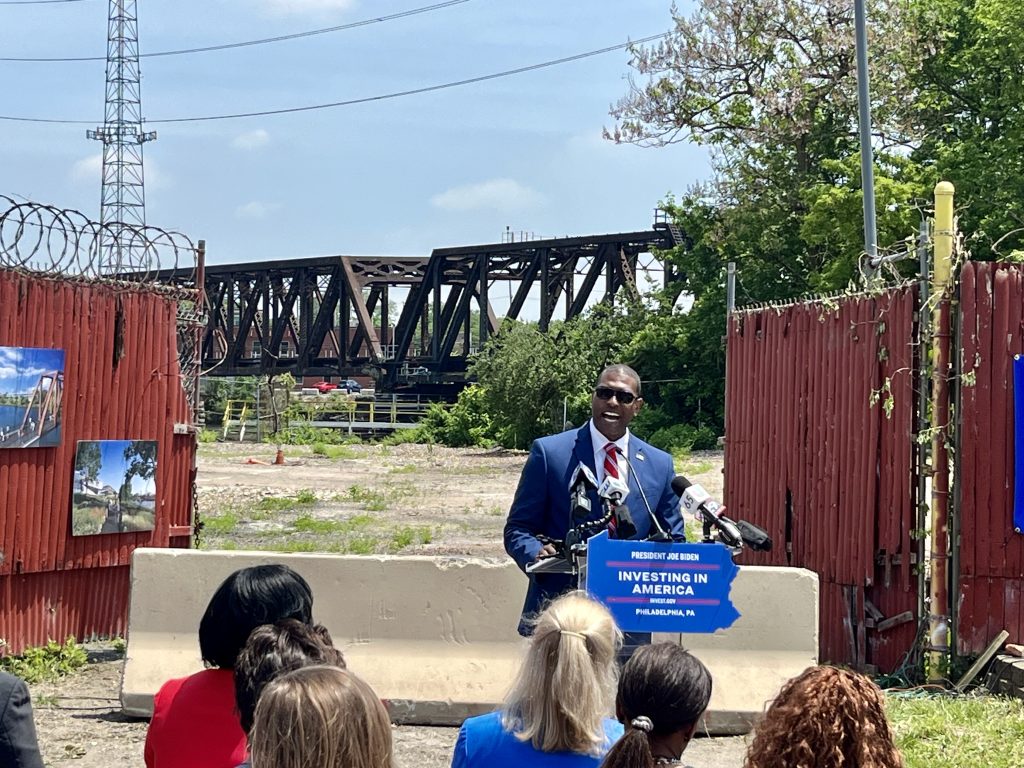
EPA awards $6.8M to clean up brownfields in Delaware River watershed
| May 21, 2024
Early on Monday afternoon, Shone London was fishing the lower Schuylkill River near his home in Southwest Philadelphia.
London, 23, a resident of Kingsessing, has lived in the neighborhood all his life but it was only about a year ago he got a notion to find a new hobby and started watching YouTube videos about fishing and then headed to the river to try out what he had learned.
But on this sunny afternoon, something unusual was afoot.
Men and women in dress clothes were gathering about a hundred yards away in front of television cameras. They were talking about a “brownfield” between where they stood and where London was casting his line — a fenced-off, one-acre parcel overgrown with weeds and dense shrubbery.
It turns out the property’s soil is contaminated by a past life as an oil transfer station. But now $2 million was being delivered to clean it up and connect two stretches of the popular Schuylkill River Trail.
London liked the sound of that. And that’s exactly what the people in the fancy clothes wanted to hear.
Among them were Michael Regan, administrator of the U.S. Environmental Protection Agency, who had chosen this site to make a national announcement.
Across the country, more than 200 sites like the one in Philadelphia will be receiving a combined $300 million in cleanup and redevelopment funding as part of a larger $1.5 billion package provided by the 2021 Bipartisan Infrastructure Law, Regan said.
The announcement included nearly $7 million for several sites in the Delaware River Watershed.
“Hundreds of thousands of these potentially dangerous sites across the country just sit idly by, jeopardizing the health and the economic security of local communities, many of which are low-income communities or communities of color,” Regan said.
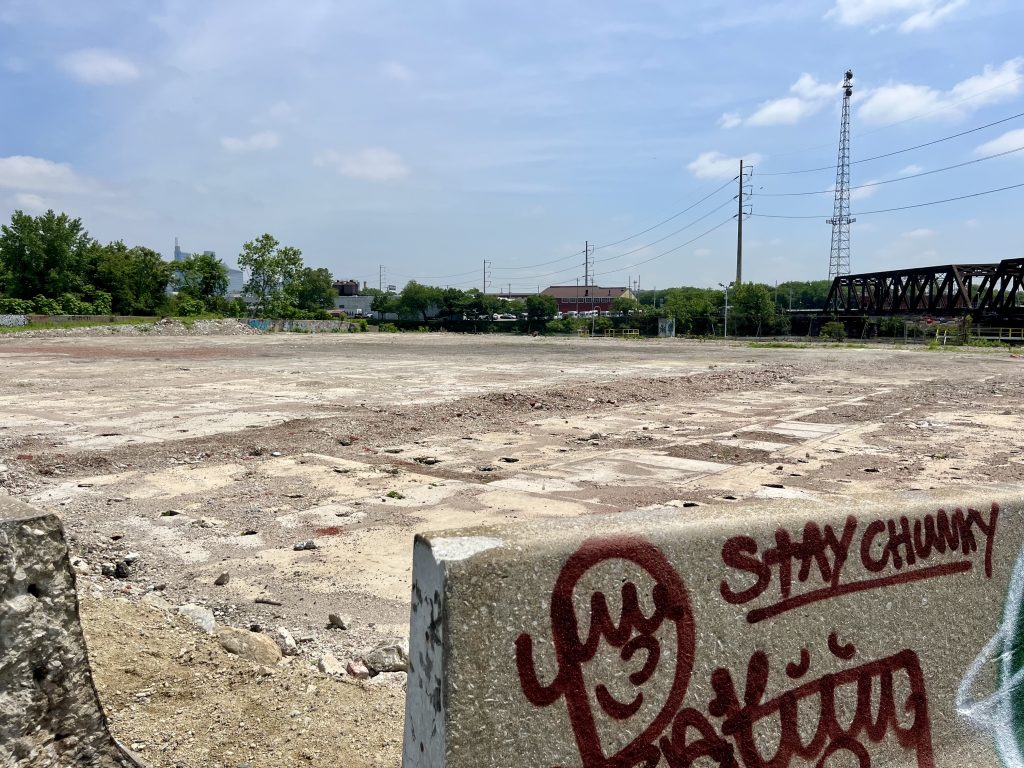
Delaware River Watershed beneficiaries
In Pennsylvania, the Philadelphia Authority for Industrial Development will receive $2 million to clean up a 49th Street Terminal parcel where Regan delivered his address. A former oil transfer station that closed in 2006, the land is contaminated by semi-volatile organic compounds and lead, officials said.
Once remediated, a portion of the parcel closest to the river will be used to connect the Schuylkill River Trail from the western banks of the river to nearby Bartram’s Garden, a public park providing riverfront access.
Elsewhere in Pennsylvania, Easton will get $500,000 to clean up a former Easton Iron & Metal property.
According to Lehigh Valley Live, the city assumed ownership of the 11-acre parcel in 2023 as a years-long effort to redevelop it picked up steam. Officials told the news outlet that soil remediation was needed to implement a redevelopment plan calling for 150 homes and 20,000 square feet of commercial space.
In Delaware, the Downtown Dover Partnership is to receive a $1 million grant, which will be used to conduct investigations at several brownfields in the city, as well as clean up a former foundry and a former dry cleaner in the city’s downtown, according to the EPA.
Three grants are headed to New Jersey communities in or straddling the Delaware River watershed.
In Camden, $1 million will be used to clean up the former West Jersey Paper Manufacturing site, which the EPA said is “contaminated with heavy metals, arsenic, polycyclic aromatic hydrocarbons and PCBs.”
The Camden Redevelopment Agency will get $500,000 to help with brownfield investigations along the Federal Street Industrial and Commercial Corridor in the eastern part of the city.
The Borough of Woodbine in Southern New Jersey will get $1 million to “support a range of eligible activities, including environmental site assessments” the EPA said, adding that funds will be used to investigate or clean up the site of a former hat company, a former landfill and the Woodbine Municipal Airport.
At the upper end of the Delaware River watershed in New York, the Orange County Industrial Development Agency is slated to receive $500,000 in brownfield assessment grants, and the Sullivan County Land Bank Corporation, $300,000.
Brownfields vs. Superfund sites
When people think of contaminated land, they often think of the EPA’s Superfund program. Started in 1980, it seeks to identify and clean up highly contaminated sites that often present acute public health risks.
But Linda Garczynski, a former director of the EPA’s Brownfields Program, said the office opened 15 years later as a result of unintended drawbacks of the Superfund program.
Garczynski said the Superfund law had a chilling effect on would-be developers because of its strict liability requirements for the owners of a property who were reluctant to purchase parcels with potentially troubling histories and then be on the hook for whatever future clean-up regulators determined were required.
The brownfield program instead allowed for any would-be developers to apply for EPA funds to investigate sites and determine what would be needed to remediate them.
Read more: Climate change raises the risks of hazardous materials getting into the Delaware River
Then, if developers followed through on the required clean-up, they’d be free of any future liability, giving them certainty on just what they were getting themselves into.
“There was a very chilling effect on cities, especially old industrial cities, with old abandoned manufacturing facilities, so that no good Samaritan could walk up and clean up and redevelop the property,” Garczynski said.
The EPA said that since the inception of the brownfields program in 1995, it has provided about $2.7 billion in grants to clean up such sites. That’s what makes the 2021 infrastructure law, and its extra infusion of $1.5 billion over five years, so significant, advocates said.
Brownfields run the gamut, from small parcels like the one in Philadelphia to former factories spanning hundreds of acres.
The land could be extremely contaminated by past uses, or perhaps not contaminated at all. The only central defining definition of a brownfield is a piece of property with a known or suspected past issue that hinders its redevelopment.
As such, there is also no formal list of brownfield sites nationwide.
While the EPA counts about 1,300 Superfund sites, it estimates there may be as many as 450,000 brownfields across the country. Nearly half of all Americans live within three miles of one, the agency estimates.



